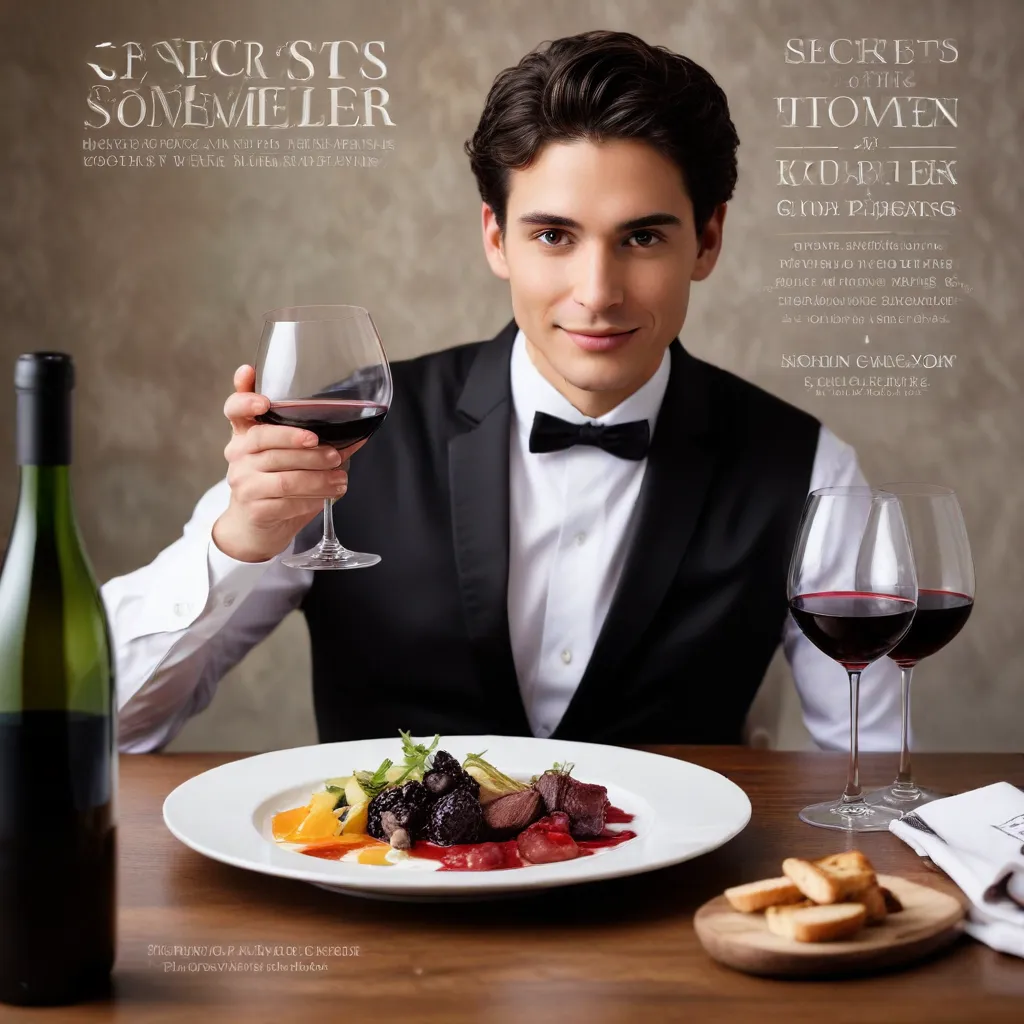
As a hospitality and wine expert at the renowned Wine Garden Inn, I’ve made it my mission to unravel the secrets behind exceptional food and wine pairings. After all, the art of matching culinary delights with the perfect libation is the hallmark of an unforgettable dining experience.
At the heart of this pursuit lies the expertise of the sommelier – those highly trained wine professionals whose palates can discern the most subtle nuances, and whose knowledge of viticulture and vinification allows them to seamlessly harmonize the flavors, textures, and aromas of food and wine. Through their mastery, they elevate the dining experience, transforming a meal into a symphony of complementary flavors that delight the senses.
Wine Fundamentals
To begin our exploration, let’s start with the building blocks of wine itself. Understanding the key characteristics of different wine varietals and their origins is crucial to crafting successful pairings.
Chardonnay, for example, can range from crisp and citrusy to rich and creamy, depending on factors like oak aging and malolactic fermentation. Pairing this versatile white wine requires careful consideration of the dish’s flavors and textures. An unoaked Chardonnay with bright acidity might be the perfect foil for a delicate seafood dish, while a fuller-bodied, buttery Chardonnay could elevate the creaminess of a chicken in a lemon-tarragon sauce.
Similarly, the nuances of terroir – the unique combination of soil, climate, and geography that shape a wine’s character – can inform ideal food pairings. A Pinot Noir from the foggy Sonoma Coast, with its bright red fruit and earthy undertones, might be the ideal match for a duck breast accented with Chinese spices, while a more powerful, tannic Pinot Noir from the Russian River Valley could stand up to a grilled pork chop.
The Sommelier’s Expertise
The sommelier’s role is to be the bridge between the kitchen and the cellar, using their extensive knowledge to craft harmonious pairings that elevate the entire dining experience. Through rigorous training and certification programs, these wine experts hone their tasting skills, develop an encyclopedic understanding of grape varieties and wine regions, and learn to anticipate the nuanced interactions between food and wine.
The Court of Master Sommeliers, for example, administers a grueling examination process that tests candidates’ ability to blind taste, identify, and describe wines with near-perfect accuracy. Those who emerge victorious, bearing the prestigious Master Sommelier title, have proven their mastery of the art and science of pairing.
But the sommelier’s expertise extends far beyond mere technical knowledge. The best in the business possess an innate ability to read their guests, understanding their preferences and guiding them towards pairings that will delight their palates. They are consummate hosts, artfully weaving together the culinary and viticultural threads to create a tapestry of flavors that leaves a lasting impression.
Principles of Food and Wine Pairing
At the core of successful food and wine pairing lie a few fundamental principles. The first is balancing flavors. A wine with high acidity can cut through the richness of a dish, while a touch of sweetness can temper the heat of spicy cuisine. Paying attention to the interplay of these basic taste sensations – sweet, sour, salty, bitter, and umami – is crucial.
Equally important is complementing textures. A light, delicate fish pairs beautifully with a crisp, mineral-driven white wine, while a hearty steak demands the structure and weight of a robust red. By considering the mouthfeel of both the food and the wine, the sommelier can ensure a seamless integration of the two.
And finally, the art of pairing involves enhancing aromas. The volatile compounds in wine can either accentuate or clash with the fragrant elements of a dish. A Sauvignon Blanc with its distinctive herbal and citrus notes might seem a natural match for a fresh garden salad, while the earthy, mushroom-like aromas of a Pinot Noir could elevate the umami-richness of a mushroom risotto.
Mastering the Art of Pairing
Putting these principles into practice requires both knowledge and creativity. The sommelier must have a deep understanding of how to match wine to cuisine, considering not just the primary ingredients, but the preparation methods, sauces, and seasonings as well.
Sometimes, the perfect pairing is obvious – a classic Fench Bordeaux with a juicy steak, or a crisp Provençal rosé with a summery salad. But other times, the sommelier must navigate more complex pairings, such as balancing the sweetness of a dessert with the acidity of a late-harvest Riesling, or finding a wine that can stand up to the bold flavors of Asian or Latin American dishes.
Versatile wine selections can also be a sommelier’s secret weapon. Choosing a wine with enough structure and complexity to pair with a range of dishes – think a medium-bodied Tempranillo or an aromatic Gewürztraminer – allows for more flexible and personalized pairings.
By mastering the art of food and wine pairing, the sommelier elevates the entire dining experience, transforming a meal into a symphony of flavors that tantalizes the senses and leaves a lasting impression. It is a skill that requires continual refinement, as new ingredients, preparations, and wine styles emerge, but the rewards for both the sommelier and the guest are immeasurable.
So the next time you sit down to a meal, pay close attention to the dance between your food and your wine. Allow the sommelier’s expertise to guide you, and prepare to be delighted by the unexpected harmonies that unfold on your palate. After all, the secrets of the sommelier are yours for the discovering.
